By Dan Chung
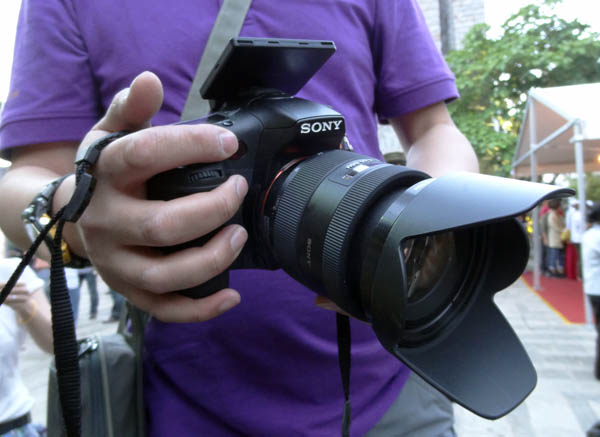
Last week I had a very brief hands on with Sony’s new A77 SLT camera and the new 16-50mm f2.8 lens. I was at the Dali international photo festival in southern china and one of the other photographer’s there had a PAL model A77 on loan from Sony. This much anticipated camera has some significant new features that warrant discussion.
This is not a full review – simply some brief observations about how the camera performs in video mode.
The A77 is Sony’s latest prosumer stills camera with enhanced video features and the Alpha (formerly Konica-Minolta) lens mount. It has a 24 megapixel APS-C size sensor and can shoot HD video at 1080P in AVCHD 2.0. It also has a MPEG movie mode. Frame rates go up to 50fps, but I only tested 25fps in the time I had. (The US NTSC model does 24 and 60 frames per second instead).
The main feature that has excited some shooters is the inclusion of a fast autofocus (AF) system in video mode. This is made possible with the use of Sony’s SLT technology – a fixed semi transparent mirror which passes most of the light to the CMOS imaging sensor while diverting a little to fast AF sensors while still recording video. On a more conventional SLR system the reflex mirror with AF system behind which flips out of the way when shooting – forcing the use of manual focus or a slower contrast detect AF.
The problem I immediately found was that in order to use the AF system you had to set the camera’s video mode to Program exposure Manual exposure is simply not possible in combination with AF it seems. For me that is a deal breaker, I need to control my shutter speed and aperture in video.
So after a minute or two I switched to manual focus and turned on the A77’s focus peaking function. This is a really nice feature that tries to show what is in focus by turning edges red in camera’s display. You can fine tune the amount of edge enhancement in the menu. I found it quite effective but did not get 100% sharp shots the whole time – maybe I would improve with time using this feature.
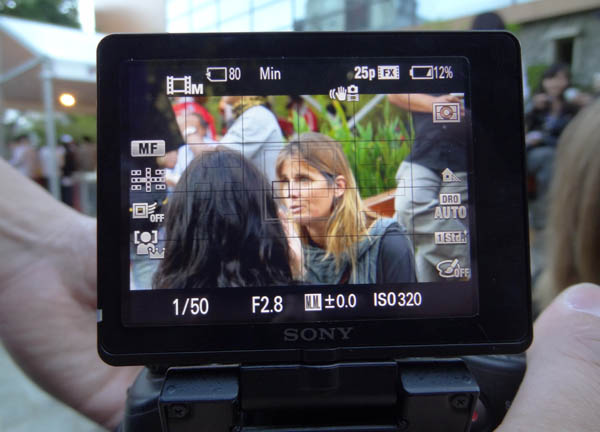
The flip out screen is a welcome innovation too. Instead of flipping out to the side of the camera it can be flipped so it sits on the top so you can look down on it and easily cradle it like a prosumer camcorder. Combined with the peaking feature this is a very nice handheld solution if you like shooting from belly height.
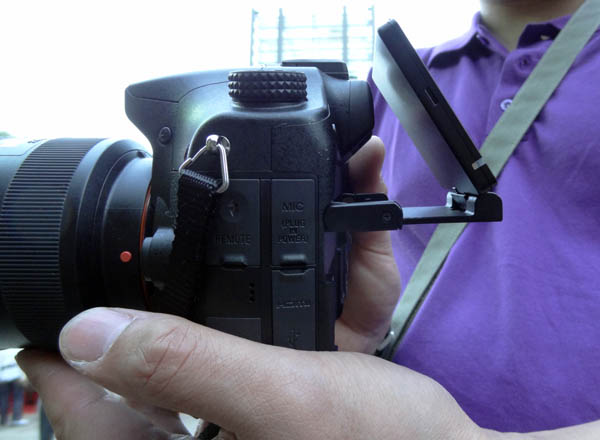
Another lovely feature is the OLED EVF which replaces the conventional pentaprism and works not just for stills but video too. It is much higher resolution than the rear LCD display and makes shooting in bright conditions a breeze if you are holding the camera to your eye. I hope this quality of EVF becomes the standard in all digital cameras very soon.
Where the A77 is seriously lacking as a video camera is the audio side. Like many other stills cameras Sony have decided that the A77 should have no manual audio control. There is a 3.5mm mic jack for external mics but recording level is completely automatic. Why Sony don’t implement manual audio levels in the way the Canon does on the 5DmkII I have no idea.
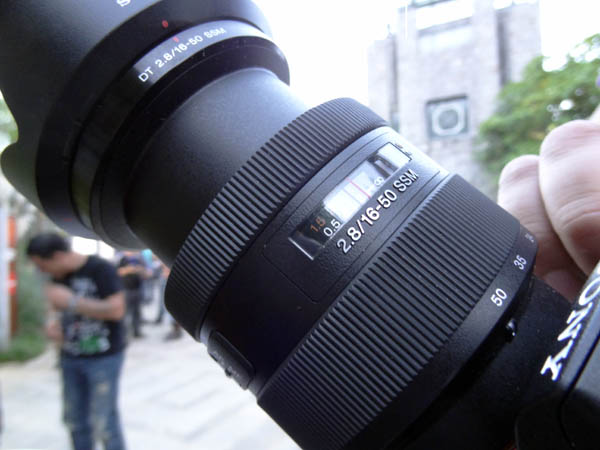
The 16-50mm f2.8 was the only lens I tested and it seems to have excellent image stabilization when used with the A77. The smoothness of the shots of myself where I spin the camera around just in my hand are impressive to me. (newspaper video folk may recognize a certain Mr Chuck Fadely from the Miami Herald in the video with me) The lens felt quite solid and the manual focus is one of the smoothest I’ve tried on an autofocus stills lens. I can see it making a great run and gun lens when used with the LA-E2 adapter for the FS100.
The camera’s menu and the controls were a little alien to me and I found them to be confusing. That said maybe that’s simply because I am so used to a canon.
Another negative is I believe that the video image is also permanently cropped not just top and bottom by the 16×9 window, but also side to side due to the sensor based image stabilising system. I was unable to establish the crop amount in the time I had but it seemed that wide angle lenses were really not as wide as they should be. Again this could be a real issue for news shooting where there is little time to change between lenses.
I also found that at the end of each video clip I recorded on the camera I had to wait a second or two while the camera finalised the recording. This was very annoying and I could see it being a real problem in a fast moving new situation.
I was able to quickly shoot the footage above and discovered quickly that the image quality at the 24Mb/s highest bitrate settings was not what I had hoped for. On the positive side I saw no sign of the dreaded jello or rolling shutter effect (check out the part where I spin around with the camera), but there is sadly significant jagged edges on lines of high contrast and fine detail. Moire patterning seemed to be less of an issue but will require more scientific tests before reaching a final conclusion. Overall the results were also little less detailed than I would have expected, certainly not up to the standard of cameras like Sony’s own FS100.
The video samples are shot handheld in standard settings at 25P/24Mbps with manual focus and exposure (locked at 1/50th) and an ISO of between 320 and 400. Sadly I had no time to test higher ISOs. The files were bought directly into Final Cut Pro X and then exported to H264 (apologies – I spent an age trying to get a higher res file but couldn’t upload it to Vimeo). Apart from that nothing has been done to alter the files in any way. I had literally 20 mins with the camera the shots are not perfect. White balance may be off on a few shots and you can attribute that to user error on my part. (Please don’t try an read too much into the Vimeo version of these clips, I will try to find a way to post some original files later).
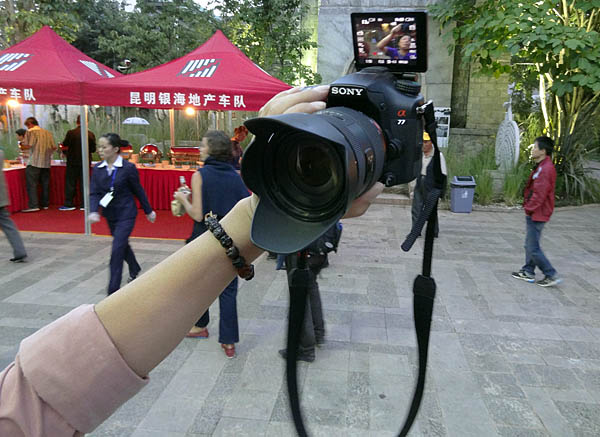
So would I switch to the A77? As a Canon 5DmkII shooter I can see little to tempt me over to using the A77 right now. The only reason I might consider this camera is if I was a Sony FS100 shooter using alpha lenses (with an adapter) and looking for a cheap second body. The A77 with it’s AF and flip screen does do a fine job of making handycam style video for consumers easier – but for serious use it is not going to need to get better.






